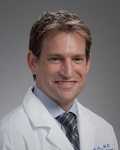AHRQ, Author Interviews, Cost of Health Care / 17.07.2015
5% of US Population Accounts For 50% of Health Care Costs
 MedicalResearch.com Interview with:
H. Joanna Jiang, Ph.D.
Agency for Healthcare Research and Quality
MedicalResearch: What is the background for this study? What are the main findings?
Dr. Jiang: A large proportion of health care resources in the United States are consumed by a relatively small number of individuals, who have been dubbed super-utilizers. Approximately 25% of U.S. health care expenses are incurred by 1% of the U.S. population, and 50% of expenses are incurred by 5% of the population.
Our study found that across all types of payers of medical care (Medicare, Medicaid, and private insurance), super-utilizers on average had approximately 4 times as many hospital stays as other patients, and the 30-day hospital readmission rate for super-utilizers was 4 to 8 times higher than for other patients. Among Medicaid and privately insured patients, super-utilizers had longer hospital stays and higher average hospital costs than other patients.
We also found that patients with multiple chronic conditions, such as diabetes, hypertension, and congestive heart failure, accounted for a greater share of hospital stays among super-utilizers than among other hospitalized patients. Mental health and substance use disorders were among the top 10 principal diagnoses for super-utilizers aged 1 to 64 years regardless of payer.
(more…)
MedicalResearch.com Interview with:
H. Joanna Jiang, Ph.D.
Agency for Healthcare Research and Quality
MedicalResearch: What is the background for this study? What are the main findings?
Dr. Jiang: A large proportion of health care resources in the United States are consumed by a relatively small number of individuals, who have been dubbed super-utilizers. Approximately 25% of U.S. health care expenses are incurred by 1% of the U.S. population, and 50% of expenses are incurred by 5% of the population.
Our study found that across all types of payers of medical care (Medicare, Medicaid, and private insurance), super-utilizers on average had approximately 4 times as many hospital stays as other patients, and the 30-day hospital readmission rate for super-utilizers was 4 to 8 times higher than for other patients. Among Medicaid and privately insured patients, super-utilizers had longer hospital stays and higher average hospital costs than other patients.
We also found that patients with multiple chronic conditions, such as diabetes, hypertension, and congestive heart failure, accounted for a greater share of hospital stays among super-utilizers than among other hospitalized patients. Mental health and substance use disorders were among the top 10 principal diagnoses for super-utilizers aged 1 to 64 years regardless of payer.
(more…)

















